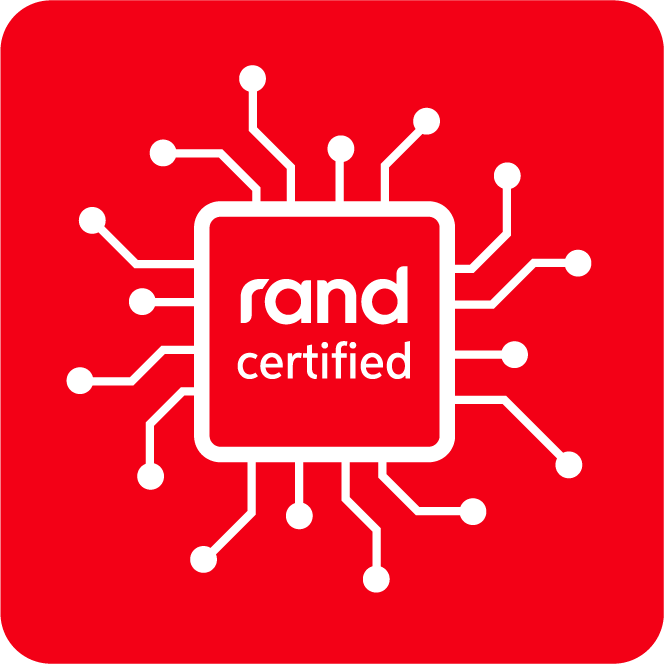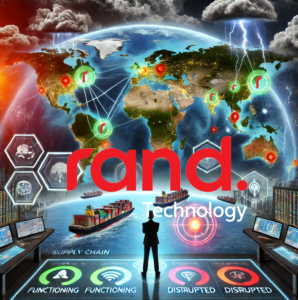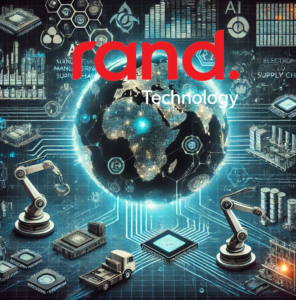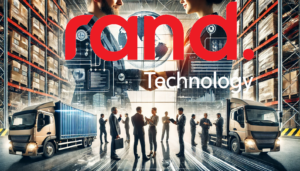The global supply chain landscape has never been more unpredictable. From geopolitical tensions and trade wars to natural disasters and unexpected global crises, disruptions have become a constant. The COVID-19 pandemic exposed vulnerabilities many executives had overlooked, forcing companies to rethink their supply chain strategies. Today, CEOs must prepare for an era where uncertainty is the norm rather than the exception.
At Rand Technology, we work with some of the world’s leading companies to develop agile, resilient supply chains capable of withstanding future disruptions. In this article, we’ll explore key strategies that CEOs can adopt to build supply chains that are robust and flexible enough to pivot in the face of evolving challenges.
The New Normal: Why CEOs Must Prioritize Supply Chain Resilience
The semiconductor industry has faced multiple crises recently, from chip shortages driven by surging demand to supply chain bottlenecks caused by logistics constraints. However, these challenges extend beyond semiconductors—automotive, aerospace, medical devices, and consumer electronics industries have suffered supply chain shocks.
Andrea Klein, CEO of Rand Technology, emphasizes the urgency for proactive strategies:
“Waiting for a crisis to strike before taking action is no longer an option. CEOs must lead the charge in transforming supply chains from reactive networks into proactive, intelligent ecosystems that can withstand future shocks.”
Building a resilient supply chain is no longer just an operational concern—it is a core business imperative that directly impacts competitiveness, financial performance, and long-term sustainability.
Strategies for Building an Agile and Robust Supply Chain
- Diversification: Expanding the Supplier Base
One of the most significant vulnerabilities that companies face is over-reliance on a single supplier or region. During the pandemic, businesses dependent on China for raw materials and manufacturing found themselves crippled when lockdowns shut down production.
James Hill, COO of Rand Technology, highlights the importance of diversification:
“Companies that proactively cultivate a diverse supplier base—across multiple regions and tiers—are better positioned to navigate disruptions. The goal is to build a network of trusted partners that provide redundancy and flexibility in sourcing.”
To achieve this, CEOs must encourage procurement teams to:
- Identify alternative suppliers in different geographic regions.
- Strengthen relationships with secondary and tertiary suppliers.
- Invest in nearshoring and reshoring initiatives where feasible.
- Leveraging Data Analytics for Real-Time Decision Making
In today’s digital age, supply chain decisions should not be based solely on intuition. CEOs need to invest in predictive analytics, artificial intelligence, and real-time data tracking to anticipate potential disruptions before they happen.
Advanced supply chain analytics can help businesses:
- Predict potential supply bottlenecks before they escalate.
- Optimize inventory management to reduce waste and improve efficiency.
- Analyze market trends to make proactive sourcing decisions.
With a robust data-driven approach, companies can transform supply chains into intelligent systems that learn and adapt over time.
- Building Strategic Inventory Buffers Without Overcommitting Capital
Companies widely adopt just-in-time (JIT) inventory models for efficiency, but these models can become liabilities during supply chain disruptions. However, the alternative—holding excessive stock—can tie up capital and create inefficiencies.
The key is to strike a balance by:
- Identifying critical components that require buffer stock.
- Leveraging AI-driven demand forecasting to adjust inventory levels dynamically.
- Utilizing vendor-managed inventory (VMI) agreements to maintain flexibility.
Kyle Miller, Head of North American Sales at Rand, underscores the importance of a strategic approach to inventory:
“With the unpredictability of the market, companies should take a data-driven approach to inventory buffers—ensuring they have critical components available without burdening the balance sheet.”
- Enhancing Supply Chain Visibility and Transparency
One of the most significant challenges in supply chain management is the lack of visibility across multiple tiers of suppliers. Many businesses do not have a clear understanding of where their components originate, making it challenging to anticipate risks.
To improve visibility, companies should:
- Implement supply chain mapping to track key suppliers and sub-suppliers.
- Utilize blockchain technology for traceability and authenticity verification.
- Foster closer collaboration with suppliers to ensure information transparency.
- Developing a Strong Crisis Management and Business Continuity Plan
Even with the best preventive strategies in place, disruptions will still occur. CEOs must equip their organizations with a structured crisis management framework that includes:
- A rapid response team dedicated to supply chain crises.
- Contingency plans for supplier shutdowns, logistics failures, and geopolitical disruptions.
- Regular risk assessments and stress-testing of the supply chain.
- Emphasizing Sustainability and ESG Compliance
A resilient supply chain is also a sustainable one. Environmental, Social, and Governance (ESG) compliance is no longer optional; it is a key differentiator for businesses operating in a global marketplace.
Sustainable supply chains provide:
- Reduced dependency on scarce raw materials.
- Lower carbon footprints through optimized logistics.
- Enhanced brand reputation and compliance with evolving regulations.
Rand Technology has been leading the charge in helping companies integrate sustainability into their supply chain strategies, ensuring long-term resilience while aligning with corporate ESG goals.
A Call to Action for CEOs
CEOs cannot afford to be passive in a world where supply chain disruptions are inevitable. Building a resilient, agile supply chain requires a proactive, strategic approach prioritizing diversification, digital transformation, strategic inventory management, and sustainability.
Rand Technology has spent decades helping global companies navigate the complexities of modern supply chains. By implementing the strategies outlined in this article, CEOs can position their companies for long-term success—ready to adapt and thrive in an era of uncertainty.
Final Thought: The time to act is now. The companies that embrace supply chain transformation today will be tomorrow’s industry leaders.


















